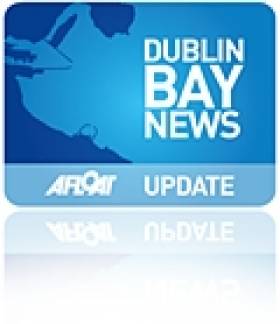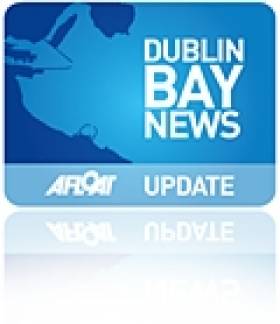Displaying items by tag: diaspora centre
Dun Laoghaire Harbour to Compete for Disapora Centre
#dlharbour – Dún Laoghaire Harbour Company (DLHC) says it hopes to take part in a competition – operated by Failte Ireland – to create a national diaspora centre.
One of the key deliverables of the Harbour Company's master plan is the creation of a diaspora centre on the historic Carlisle Pier. Meanwhile, Fáilte Ireland – last week - issued a call for 'expressions of interest' in delivering a national diaspora centre.
According to the CEO of Dún Laoghaire Harbour Company, Gerry Dunne, "The Fáilte Ireland call for expressions of interest in delivering a national diaspora centre comes at a good time for Dún Laoghaire. We are now at the point of having assembled all ideas for the centre, including a sustainability plan, so we are absolutely ready to take part in the competition to deliver a national diaspora centre.
"In the event that Dún Laoghaire is selected by Fáilte Ireland, we would be in a position to market the Dún Laoghaire diaspora centre as the 'national centre' and this would obviously assist in marketing at a global level."
Gerry Dunne was speaking at a lunchtime seminar today which was organised by DLHC on the issue of diaspora policy. The key issues arising from the seminar will be used to inform the Habour Company's submission to the Department of Foreign Affairs public consultation on diaspora policy, which runs until 23rd April.
"The Harbour Company is acutely aware of the role which the Harbour in Dún Laoghaire played in the lives of so many of our diaspora. Indeed, we were reminded of this at numerous points during last week's State visit by the President to England.
"We intend to lean on our history; our research on diaspora that has been undertaken to inform the planned diaspora centre; and the lessons from the Global Diaspora Forum - which we hosted last year in conjunction with the US State Department - to inform our submission to the Government's consultation on diaspora policy. In addition, the contributions at today's seminar will also help inform our submission," said Gerry Dunne.
Among those attending today's seminar in Dún Laoghaire was Labour Party MEP, Emer Costello, who has been a strong supporter of the planned diaspora centre at Dún Laoghaire. According to Ms Costello: "The past week – with the State visit to England – was a watershed in Anglo-Irish relations. There was a strong acknowledgement of our shared history, but there was also huge expectation about our future relationship. But, throughout all of last week, I could not help thinking that among those for whom this visit had the greatest import were the diaspora. Those women and men who left these shores in search of work. From the unskilled labourers and house maids to the highly-educated professionals.
"Their story is a story shared by Irish diaspora in the four corners of the world. Some excelled and exceeded levels of achievement that they might never had the opportunity of doing, had they not taken the boat. Others, were less fortunate. But ultimately, the Irish abroad – our diaspora – are strong and numerous, and want to be connected. We need them to be connected. It's a globalised society and they are one of our strongest assets if we're to be effective in business, education and development.
"It gives me great pleasure therefore to be here today, as part of this discussion on Dún Laoghaire Harbour Company's submission to the consultation by the Department of Foreign Affairs and Trade on diaspora. From the day I was briefed about plans to create a diaspora centre on the harbour here, I have been a supporter. I believe the plans by the Harbour Company have capacity to deliver the connection to our diaspora abroad, as well as to tact as an education and leisure amenity for everyone: Irish people, new Irish and those from across the globe with an interest in diaspora," she added.
Cruise Callers to Dun Laoghaire ‘Recalled’
#DUN LAOGHAIRE CRUISELINERS – The recent call of what is believed to be the world's smallest cruiseship the Quest (1991/1,180grt) to Dun Laoghaire Harbour as part of an initiative to develop this sector is by no means completely new to the harbour, writes Jehan Ashmore.
It was not until a decade ago that the last cruise callers were on the scene, albeit making infrequent visits and they also varied considerably in size. Among the callers was the famous 'Cunarder' Queen Elizabeth 2 or 'QE2', RCCL's Norway formerly French Line's France and Celebrity Cruise then brand new Constellation. Notably these large vessels all made anchorage calls in Dublin Bay.
Constellation made this call in 2002 as did the Sun Bay II which was also then recently launched into service and the cruiseships were making their debut season in European waters. They could not be so different, the 2,800 tonnes Sun Bay II with an 89 passenger capacity in complete contrast to the 90,000 tonnes Constellation with over 1,800 passengers.
The diminutive Sun Bay II was not too dissimilar to Noble Caledonia's Quest in terms of passenger capacity being slightly smaller with a capacity of 52. She was alongside Carlisle Pier where her guests were on a 9-night Garden themed cruise of UK and Ireland that included tours to Powerscourt and Mount Usher in Co. Wicklow.
On the call of Constellation she anchored relatively closer to the shore off Bulloch Harbour, compared to QE2 and Norway's calls and she presented an imposing and impressive sight.
In the case of the Norway, her passengers were ferried to the marina by unusually large tenders more akin to tank landing craft as they bow doors (click PHOTO). In fact they were so large that they could not be stowed on the lifeboat deck and instead located forward of the bridge where deck-mounted cranes were used for hoisting operations.
The practice of anchorage calls will continue as vessels of this size will remain too large to be accommodated in the harbour in the short term, though the Dun Laoghaire Harbour Company's 'masterplan' includes a proposed €18m new cruise terminal. They claim the terminal would be capable of handling the largest and most modern cruiseships in the world.
In the meantime the landing point for tenders to use a new tender dock facility was installed recently at the Traders Wharf, as distinct to the Carlisle Pier (site of proposed Diaspora Museum) where small to medium sized vessels are to berth.
A further three more calls are scheduled this season, including a return call next week of Quest and other vessels capable of carrying around 500 passengers. This figure is to rise considerably in May 2013, thanks mostly due in part to the massive Cunard Line flagship Queen Mary 2 (QM2). The 151,400 tonnes 'liner' can take over 2,600 passengers and 1,200 crew alone.
With the visit of QM2, this is to be her fist call to Dublin Bay, as she is still to be big even for Dublin Port to handle. Likewise the rivals across Dublin Bay in the Dublin Port Company are proposing as part of their masterplan to build a €30m dedicated cruise terminal. This facility would also be able to accommodate very large cruise callers.
It will be interesting to see how both completing ports progress and how they market themselves to the cruise sector industry, no doubt across the board. The giant ships look after large volumes which keep cruise prices down. As for the smaller boutique style of cruiseship operators, they can command higher prices by targeting the top end of the market and where they have higher-spending power at ports of call . The cruise industry overall is becoming increasingly more globalised where it was traditionally the preserve of the European and North American markets.
Arguably it is debatable if there should be two cruise terminals built as it reminiscent of the controversary during the '80's over the battle between which Dublin Bay port would be chosen for the site of a new single dedicated multi-user car-ferry terminal.
As it transpired the ferry service to Holyhead remains operating out of Dun Laoghaire Harbour, where a new terminal was built specifically to dock the revolutionary design of the HSS (High-speed Sea Service) fast craft catamaran car-ferry. Albeit in recent years the route's sailing frequency has reduced considerably. Under the last contract between Stena and the harbour company, this has led to considerably less revenue generated in harbour dues. The HSS Stena Explorer currently maintains only a single daily round-trip and only on a seasonal basis between April-September.
While at Dublin Port a multi-user ferry terminal was built but Stena Line did not immediately become part of the facility. It was not until 1995 that they set up an additional new service from Dublin Port to Holyhead. They use a second adjacent terminal that is currently served by two ferries on the company's second route to Wales.
Dun Laoghaire Diaspora Centre Seeks Funding
Dun Laoghaire's planned new diaspora centre will rival the likes of Sydney Opera House, according to the semi-state body behind the proposal.
Dun Laoghaire Harbour Company estimates the cost of the project at €50 million. Most of this will come from EU and State funding, but some €15 million in donations will be required for the scheme to go ahead.
It's expected that this money will come from corporate donors and private investors, both at home and among the diaspora.
Discussions have also begun with a view to twinning the centre with the Ellis Island memorial in New York.
The diaspora centre would directly provide 200 jobs in Dun Laoghaire, which hopes to begin welcoming the latest breed of cruise liners to the harbour next year.


























































